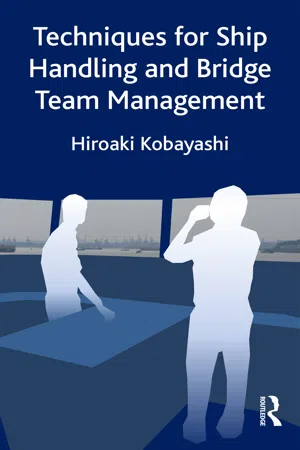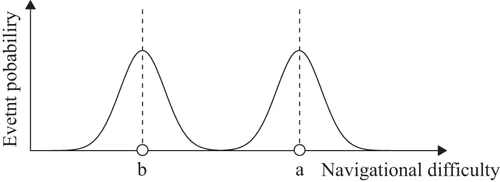
- 244 pages
- English
- ePUB (mobile friendly)
- Available on iOS & Android
Techniques for Ship Handling and Bridge Team Management
About this book
Hiroaki Kobayashi has trained 1500 mariners in ship handling over twenty years and he has systematized the methods of safe navigation into nine elemental techniques. Taking a rigorous and scientific look at good practice and attitudes, good seamanship can be viewed as a series of concrete technical functions, which can be in terms of competencies.
By giving proper attention to human factors the conditions for maintaining system safety can be defined, and the interaction of human competencies and environmental conditions and their effects on system safety can be recognised. System safety in turn depends on good bridge team management, with particular emphasis on communication, cooperation and leadership – communication for the exchange of information, cooperation to smooth team activities, and leadership to ensure that each member of the team performs successfully.
Frequently asked questions
- Essential is ideal for learners and professionals who enjoy exploring a wide range of subjects. Access the Essential Library with 800,000+ trusted titles and best-sellers across business, personal growth, and the humanities. Includes unlimited reading time and Standard Read Aloud voice.
- Complete: Perfect for advanced learners and researchers needing full, unrestricted access. Unlock 1.4M+ books across hundreds of subjects, including academic and specialized titles. The Complete Plan also includes advanced features like Premium Read Aloud and Research Assistant.
Please note we cannot support devices running on iOS 13 and Android 7 or earlier. Learn more about using the app.
Information
Part I
Techniques for Ship Handling
- Chapter 1 Factors in Achieving Safe Navigation
- Chapter 2 Analysis of Techniques for Ship Handling
- Chapter 3 Inadequate Knowledge and Competency Often Observed in Inexperienced Seafarer
- Chapter 4 Significance and Use of Elemental Technique Development
Part I
Preface
Chapter 1
Factors in Achieving Safe Navigation
1.1 Difficulty of the Navigational Environment
1.2 Factors Affecting Navigational Difficulty


| 1 Ship maneuverability |
| 2 Geographic and water conditions being navigated |
| 3 Weather and sea state |
| 4 Marine traffic conditions |
| 5 Rules of navigation |
| 6 Onboard handling support systems |
| 7 Onshore navigation support systems |
- 1) Ship maneuverability
The turning radius, stopping distance, and other maneuvering characteristics of the ship being handled are directly connected to its difficulty in maneuvering, especially in water areas that are narrow or have congested traffic. In addition, very large ships such as very large crude carriers (VLCCs) have poor speed deceleration performance and therefore, require a...
Table of contents
- Cover
- Half-Title
- Title
- Copyright
- Contents
- About the Author
- A Note from the Author
- Introduction
- PART I Techniques for Ship Handling
- PART II Bridge Team Management
- PART III Bridge Team Management/Bridge Resource Management Training
- Postscript
- Summary of Key Factors
- Index